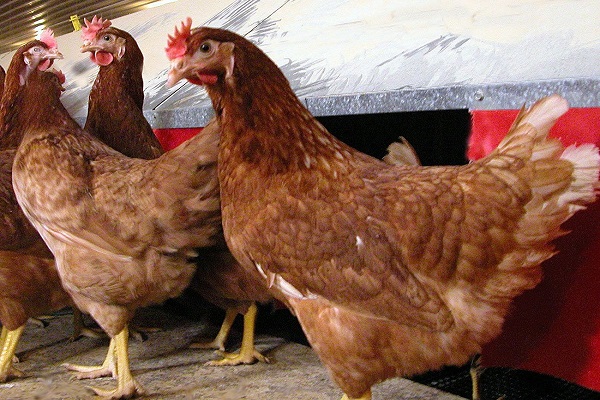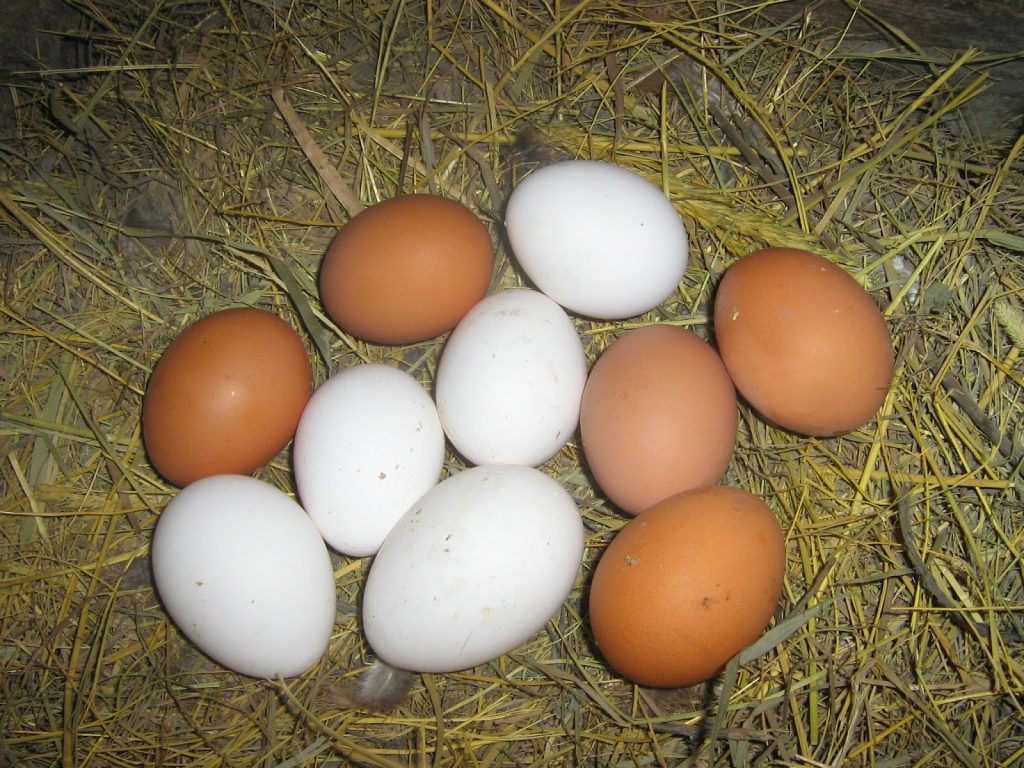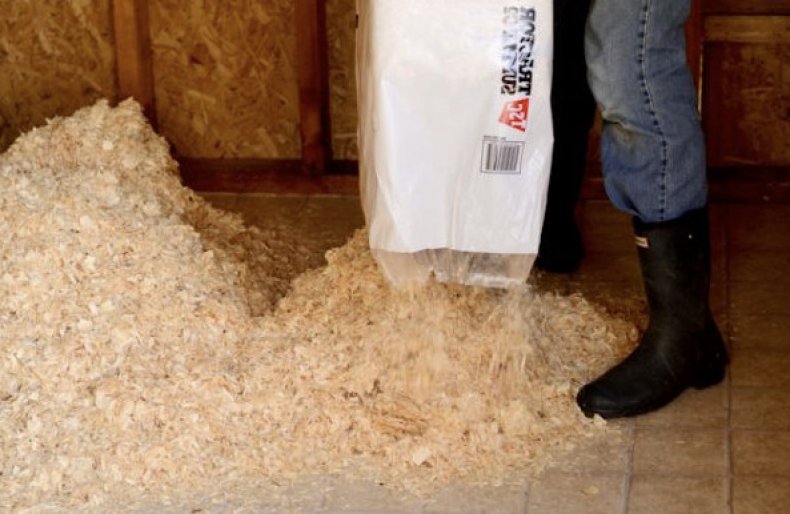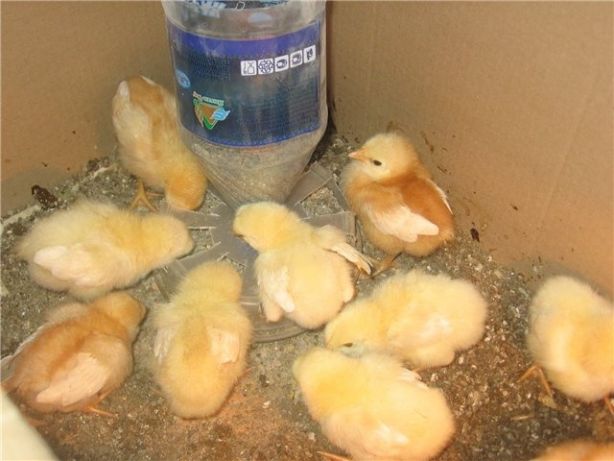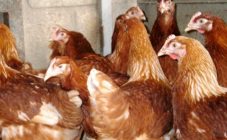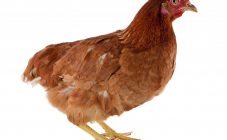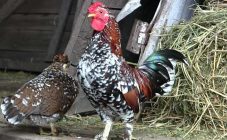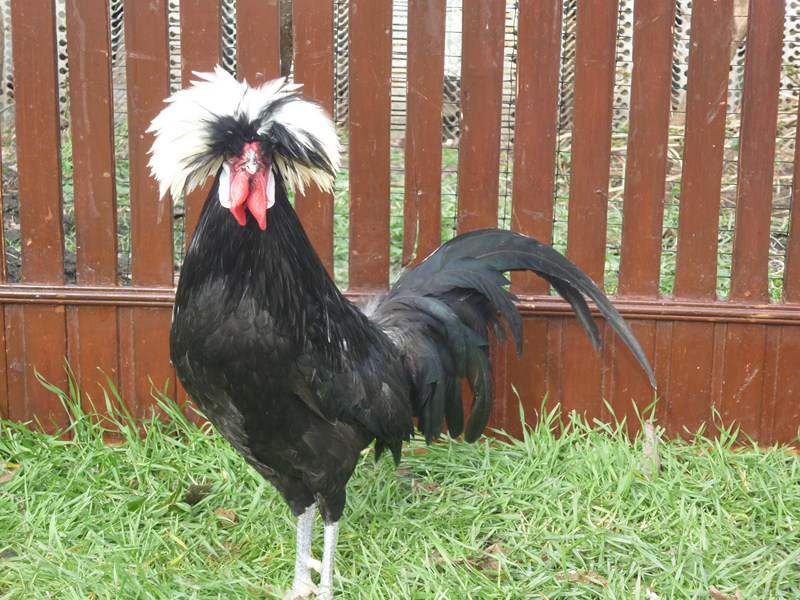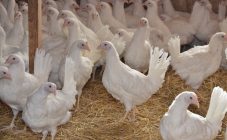Content:
Chicken is the most common homemade pizza. Belongs to the pheasant family. Roosters are always larger than females, have bright plumage and a pronounced comb. Birds are raised for eggs and meat. Separately, egg, meat and egg-meat direction in selection is distinguished. In some countries, birds are raised for cockfighting. Eggs are an important food source of protein. Chicken meat is very tasty and healthy, delicate in taste, practically without fat, easy to cook.
Laying hens are hens that lay eggs, hens - who incubate them to give birth to chickens. A good laying hen can produce 200-250 eggs per year. To do this, you need to provide the birds with good living conditions and nutrition, which is rich in vitamins and proteins.
Over the centuries, people have developed many breeds. They differ in behavior, size, plumage color, ridge shape, egg size and color. According to many poultry farmers, Hisex chickens, or Hisek, are considered the most highly productive breed.
Breeding history
The description says that Hisek chickens are a cross bred in the 70s of the last century. Dutch breeders have obtained from the same parental pairs two variants of this cross's hybrids. The first line is Highsek Brown, the second is Highsek White. The basis for creating such hybrids was the Leghorn and New Hampshire chicken breeds. The Hisex White line was able to inherit the white plumage from the Leghorn breed, and the Brown variety (Hisex Brown) received a brown color from New Hampshire. Hybrids have high egg production rates.
Chickens of the High Sussex breed (Brown or White) - this name can be found in the vastness of the Web or in the lexicon of poultry farmers. This is a distorted version of the name Hisex.
Characteristics and features of the breed
Hisex Brown chicken belongs to the egg-meat type. These are brown chickens with a strong, beautiful constitution and good endurance. Do not reach large sizes. The weight of one chicken is about 2 kg. Highsek cocks are not too big. The tail has light feathers. The comb is not lying. Individuals quickly get used to people, they have no aggression. They are active, phlegmatic and extremely curious. They hardly respond to changes in dietary intake or environmental conditions. Can be placed in an aviary with other breeds.
Hisex Brown chickens gain weight quickly. Chick survival rate is 99%. The advantage of this hybrid over Hisex White is that after the egg potential is realized, individuals can be allowed to eat.
Hisex White is raised only to produce eggs. They have white plumage and a graceful elongated physique. The comb is lodging in chickens, and in roosters - standing. In terms of size and weight, these chickens are inferior to Hisex Brown individuals. The chicken weighs about 1.7 kg, the roosters reach 2 kg. The Whites are more restless than the Browns. Individuals are active, aggression is observed only in males. Chickens are friendly to each other and to other breeds. Whites are gaining weight more slowly. The survival rate of chickens is 95-99%. They begin to lay eggs as early as 5 months. Egg production rates in White chickens are about the same as in Brown hens. Highsek white adult hens can lay up to 300 eggs per year. The egg sizes are also large. They contain more yolk than protein.Eggs are very nutritious.
The Hisex breed of chickens, or Hayes, is considered one of the quietest in the poultry house. They have a balanced character, they are not demanding on conditions of detention. Many poultry breeders also like the appearance of birds: smooth plumage, ease of movement, beautiful physique. Poultry farmers appreciate Hisex not only for appearance, but primarily for productivity. Cross is considered one of the most productive in terms of egg production. After 2-3 years, chickens have a decrease in egg production and a deterioration in the taste of meat.
Breeding the breed
In order for the birds to be healthy and comfortable, and their productivity does not decrease, it is necessary to provide the necessary conditions for housing and nutrition. If this is not observed, then the birds will begin to experience stress, and their egg production rates will drop.
You should start with the arrangement of the chicken coop. This should be a comfortable, well-ventilated area. Drafts are contraindicated. The walls and ceiling should be whitewashed.
The coop should be warm. This is especially true if there are Hisex chickens. In this case, you can still install an alternative heat source. If only adults are in the house, then additional heating is not needed. The room should only be insulated so that the birds do not freeze. By the way, thanks to the lush feather cover, adult Highseks have a high body temperature (42 °), so they can tolerate short-term frosts even without heating.
Then the bedding layer is formed. The floor of the chicken coop is covered with sawdust or hay. The layer thickness is 6 cm. Then it will only increase, since the old bedding does not need to be removed, a new one is applied to it. When placing the bedding, you need to make sure that there are no parasites (bugs, fleas). If suddenly they were found, then all the litter is destroyed. Otherwise, birds can become infected with various diseases.
For the prevention of diseases, you need to put containers with sand in the poultry house. It is a source of calcium as well as a goiter cleanser. In general, the Browns and Whites are in good health. They don't die from parasites, infections, or fungal diseases. In any case, you need to vaccinate against dangerous diseases, for example, Marek's disease, Newcastle disease.
Chicken roosts need to be built near the walls. They should be located 60 cm from the floor. The perches are made in one row. If they differ in height and be on top of each other, then the chickens will make a "war" for the best places.
Birds can also be placed in cages. Hisek chickens can safely endure imprisonment behind bars.
Feeders and containers with water are placed along the walls. It should be convenient for chickens to eat and drink from them, so the edge of the container should be placed at the level of the bird's back. The feed must be of high quality and contain all the necessary chemical elements and vitamins. Pebbles or sand can be added to the feed to provide the birds with calcium.
During the period of intensive growth, you will have to buy compound feed for feeding. If the chickens do not like the food, they will not peck at it. The feed must contain protein. Youngsters are given mainly small flattened grain, porridge with vegetables or chopped boiled eggs. Chicks less than 2 weeks old are fed 8 times a day. As their age increases, the number of times decreases. After 8 weeks of growth, they are fed 3 times a day.
The water must be clean and changed regularly. To train chickens to water, it is worth filling the drinker to the brim. As you grow older, the water level should be reduced.This is done so that the chickens do not splash it.
Another important condition for high bird productivity is the availability of lighting. An artificial light source is installed in autumn and winter when the daylight hours are too small. The optimal duration is 17 hours. This is exactly how much a hen needs to reproduce a normal number of eggs.
Once upon a time, Dutch scientists worked for a very long time to create this cross. A lot of experiments and crosses have led to the creation of one of the best crosses. At home, amateur breeders can try to breed and breed Highsex chickens, but they are unlikely to succeed. This cross was bred for a long time in laboratory conditions. Therefore, breeding it on your own farm is practically unrealistic.
Hysex crosses with each other or with other breeds do not give good results. The offspring is poorly productive. Egg production rates decline immediately in the second generation. In addition, not all traits can be transmitted from the parent during crosses. This is because Hisex is a cross, not a breed.
There is one more reason that prevents breeding. Hisex chickens may lack incubation instinct. Experts recommend crossing the Highsex with breeds such as Rhode Island, White Leghorn and New Hampshire. By crossing these particular breeds, the Dutch breeders received the Hysek cross.
Breed advantages and disadvantages
This cross has more advantages than disadvantages. The breed is considered one of the best in terms of productivity, has a beautiful appearance and small size. Chickens have graceful movements. They are also famous for their calm nature and can live in the same room with other breeds of chickens. They are not looking for a rival and practically do not conflict with each other. Good bird health is an important cross-breeding feature. They do not die if they become infected with any disease. Well, and the main advantage of this cross is its high egg production, for which many poultry farmers appreciate these chickens. They begin to rush 4 months after birth. They may even earlier, but, as a rule, after 140 days of birth.
The disadvantages of the cross, poultry farmers and breeders include a decrease in productivity after 2-3 years. Then you can let the birds eat meat, but it will no longer have the best taste. Another disadvantage is that birds require a lot of space.
Whether or not to breed chickens of this breed is decided by each poultry farmer, weighing the pros and cons. If the key selection criterion is getting a large number of eggs, then these crosses, like no others, are best suited for growing.
